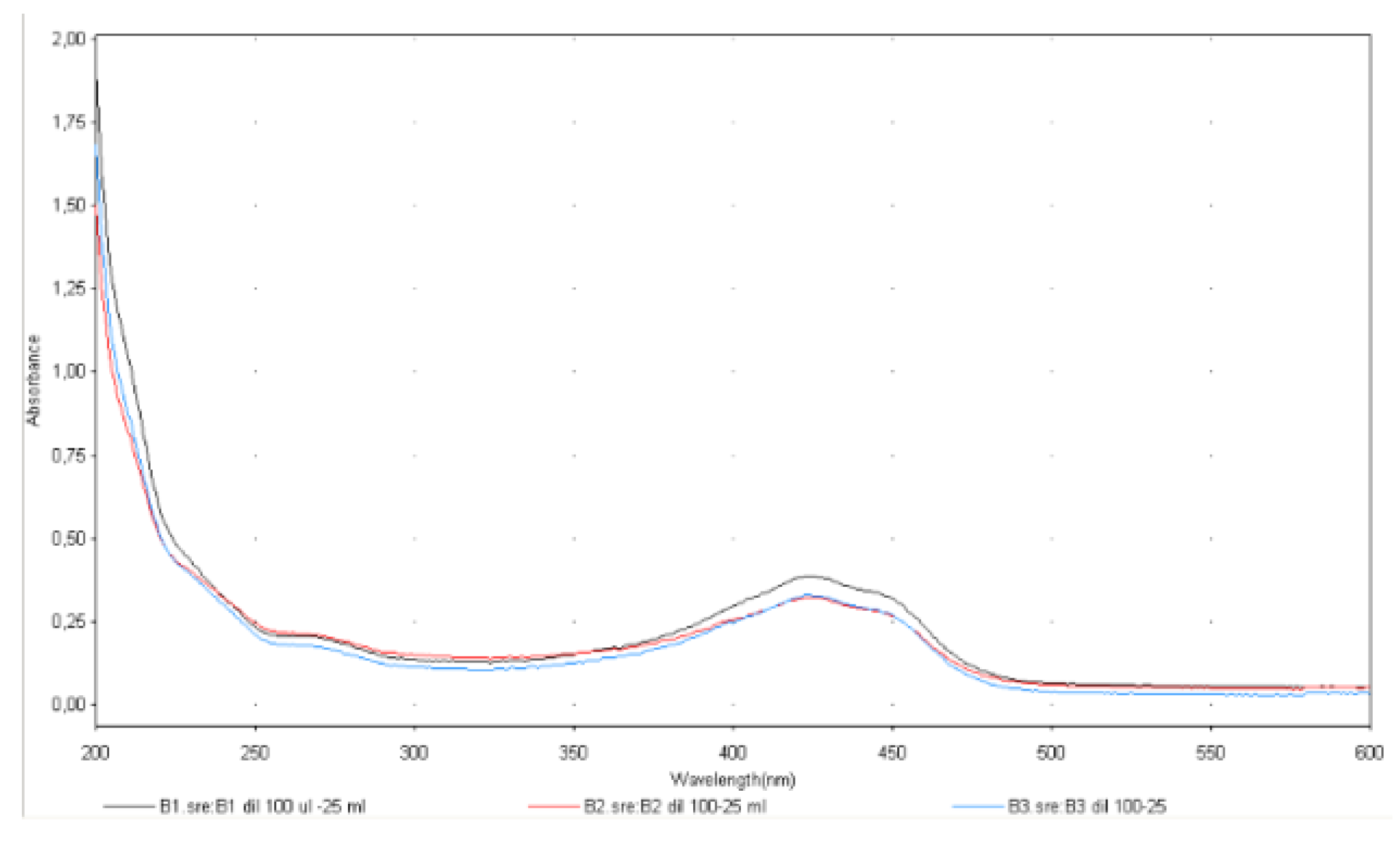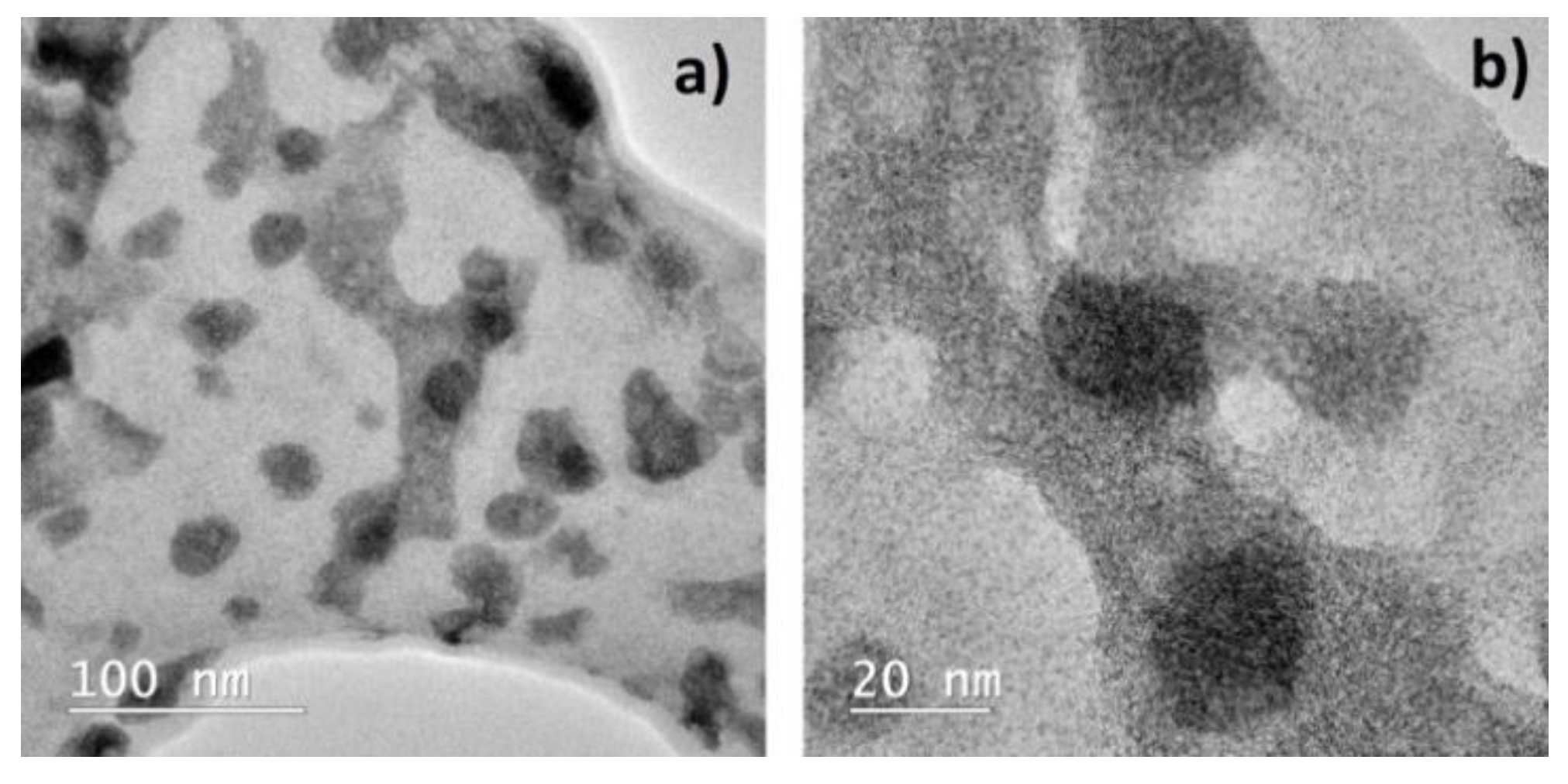Silica Nanoparticles Loaded with Curcumin—Encapsulation Efficiency †
Acknowledgments
References
- Menon, V.P.; Sudheer, A.R. Antioxidant and anti-inflammatory properties of curcumin. Adv. Exp. Med. Biol. 2007, 595, 105–125. [Google Scholar] [PubMed]
- Hewlings, S.J.; Kalman, D.S. Curcumin: A Review of Its’ Effects on Human Health. Foods 2017, 6, 92. [Google Scholar] [CrossRef] [PubMed]
- Rahman, M.A.; Subhan, M.A.; Alam, K. Synthesis and Characterization of Metal Complexes Containing Curcumin (C21H20O6) and Study of their Anti-microbial Activities and DNA Binding Properties. J. Sci. Res. 2014, 6, 97–109. [Google Scholar]


Publisher’s Note: MDPI stays neutral with regard to jurisdictional claims in published maps and institutional affiliations. |
© 2020 by the authors. Licensee MDPI, Basel, Switzerland. This article is an open access article distributed under the terms and conditions of the Creative Commons Attribution (CC BY) license (https://creativecommons.org/licenses/by/4.0/).
Share and Cite
Mihăescu, C.; Nistor, C.L.; Petcu, C.; Ianchiş, R.; Ninciuleanu, C.M.; Alexandrescu, E.; Scomoroscenco, C.; Cinteză, L.O. Silica Nanoparticles Loaded with Curcumin—Encapsulation Efficiency. Proceedings 2020, 57, 92. https://doi.org/10.3390/proceedings2020057092
Mihăescu C, Nistor CL, Petcu C, Ianchiş R, Ninciuleanu CM, Alexandrescu E, Scomoroscenco C, Cinteză LO. Silica Nanoparticles Loaded with Curcumin—Encapsulation Efficiency. Proceedings. 2020; 57(1):92. https://doi.org/10.3390/proceedings2020057092
Chicago/Turabian StyleMihăescu, Cătălin, Cristina Lavinia Nistor, Cristian Petcu, Raluca Ianchiş, Claudia Mihaela Ninciuleanu, Elvira Alexandrescu, Cristina Scomoroscenco, and Ludmila Otilia Cinteză. 2020. "Silica Nanoparticles Loaded with Curcumin—Encapsulation Efficiency" Proceedings 57, no. 1: 92. https://doi.org/10.3390/proceedings2020057092
APA StyleMihăescu, C., Nistor, C. L., Petcu, C., Ianchiş, R., Ninciuleanu, C. M., Alexandrescu, E., Scomoroscenco, C., & Cinteză, L. O. (2020). Silica Nanoparticles Loaded with Curcumin—Encapsulation Efficiency. Proceedings, 57(1), 92. https://doi.org/10.3390/proceedings2020057092






